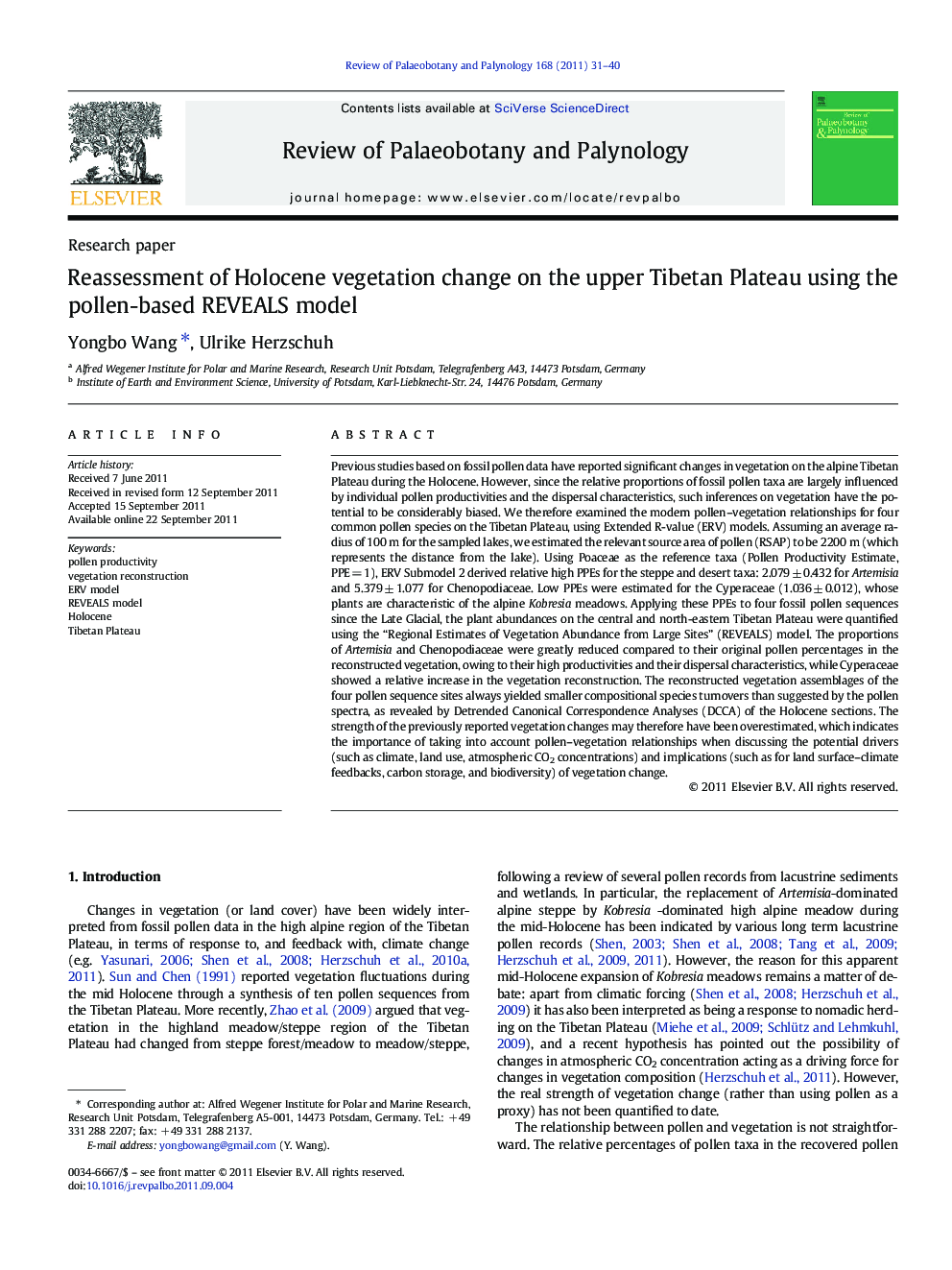| کد مقاله | کد نشریه | سال انتشار | مقاله انگلیسی | نسخه تمام متن |
|---|---|---|---|---|
| 4750518 | 1642529 | 2011 | 10 صفحه PDF | دانلود رایگان |

Previous studies based on fossil pollen data have reported significant changes in vegetation on the alpine Tibetan Plateau during the Holocene. However, since the relative proportions of fossil pollen taxa are largely influenced by individual pollen productivities and the dispersal characteristics, such inferences on vegetation have the potential to be considerably biased. We therefore examined the modern pollen–vegetation relationships for four common pollen species on the Tibetan Plateau, using Extended R-value (ERV) models. Assuming an average radius of 100 m for the sampled lakes, we estimated the relevant source area of pollen (RSAP) to be 2200 m (which represents the distance from the lake). Using Poaceae as the reference taxa (Pollen Productivity Estimate, PPE = 1), ERV Submodel 2 derived relative high PPEs for the steppe and desert taxa: 2.079 ± 0.432 for Artemisia and 5.379 ± 1.077 for Chenopodiaceae. Low PPEs were estimated for the Cyperaceae (1.036 ± 0.012), whose plants are characteristic of the alpine Kobresia meadows. Applying these PPEs to four fossil pollen sequences since the Late Glacial, the plant abundances on the central and north-eastern Tibetan Plateau were quantified using the “Regional Estimates of Vegetation Abundance from Large Sites” (REVEALS) model. The proportions of Artemisia and Chenopodiaceae were greatly reduced compared to their original pollen percentages in the reconstructed vegetation, owing to their high productivities and their dispersal characteristics, while Cyperaceae showed a relative increase in the vegetation reconstruction. The reconstructed vegetation assemblages of the four pollen sequence sites always yielded smaller compositional species turnovers than suggested by the pollen spectra, as revealed by Detrended Canonical Correspondence Analyses (DCCA) of the Holocene sections. The strength of the previously reported vegetation changes may therefore have been overestimated, which indicates the importance of taking into account pollen–vegetation relationships when discussing the potential drivers (such as climate, land use, atmospheric CO2 concentrations) and implications (such as for land surface–climate feedbacks, carbon storage, and biodiversity) of vegetation change.
► We applied the pollen based Landscape Reconstruction Algorithm to Tibetan Plateau.
► We estimated pollen productivities of major alpine steppe / alpine meadow species.
► We quantitatively reconstructed the vegetation abundances since LGM.
► We found that the previously reported vegetation changes on TP were overestimated.
Journal: Review of Palaeobotany and Palynology - Volume 168, Issue 1, November 2011, Pages 31–40